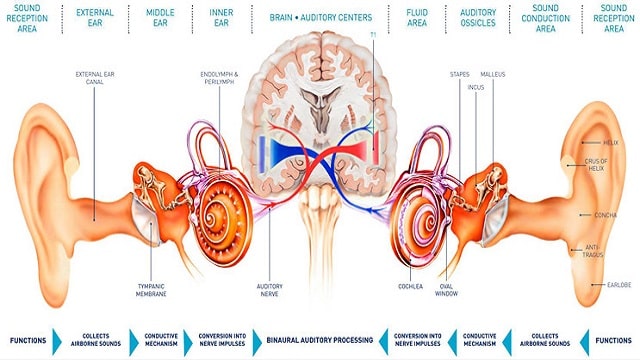The way the ear works as a sense of hearing is not as simple as it seems. The process is quite long, starting from capturing the sound around until finally the brain can recognize the sound. In addition, the ear also has another function that is no less important.
Various sounds that you hear every day, it turns out through a process that is not simple and involves another organ of the body, namely the brain. Apart from being a sense of hearing, the ear also plays a role in maintaining the balance of the body.
Not surprisingly, when experiencing hearing loss, such as ear infection or barotrauma, decreased hearing function is often accompanied by loss of body balance, for example, walking looks staggered.
Understand the Anatomy and How the Ear Works

Ear anatomy is divided into 3 main parts, namely:
1. The outer ear, consisting of the auricle and the ear canal
2. Middle ear, includes the hammer ( malleus ), anvil ( incus ), and stirrup ( stapes )
3. The inner ear includes the cochlea, vestibule and 3 semicircular or semicircular canals
The way the ear works begins when the outer ear organ, namely the earlobe, picks up sound around it until it enters the middle ear through the ear canal. When the sound enters, the sound will be converted into vibrations which are transmitted to the ossicles with the help of the eardrum.
These vibrations will move the small bones in the middle ear to help the sound move into the inner ear. When these vibrations hit the cochlea or cochlea, the hairs in the semicircular canals move and create signals to the brain.
The process of transmitting these vibrations will make the brain recognize vibrations as sound. That’s how the ear works in processing sound.
Get to know the other functions of the ear
Not only as a sense of hearing, the ear also plays a role in maintaining the balance of the body. Balance consists of 2 components, namely:
1. Static balance, namely the body’s ability to maintain balance in a fixed or standing position
2. Dynamic balance, namely the body’s ability to maintain balance when moving
The part of the ear that is responsible for balance is the 3 semicircular canals which contain thousands of tiny, fluid-filled hairs. When you move your head, the fluid in these three canals moves.
This fluid will then move the tiny hairs and send signals to the brain about the position of your head. After that, the brain will convey messages to the muscles to maintain body balance.
In addition to recognizing the function and workings of the ear, it is also important for you to know how to maintain ear health and hygiene.
To keep it clean, you should avoid some things that can damage the function of the ear, such as listening to music too loud and the habit of picking at the ear using objects, such as the tip of a pen or paper clip.
